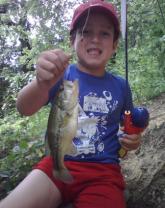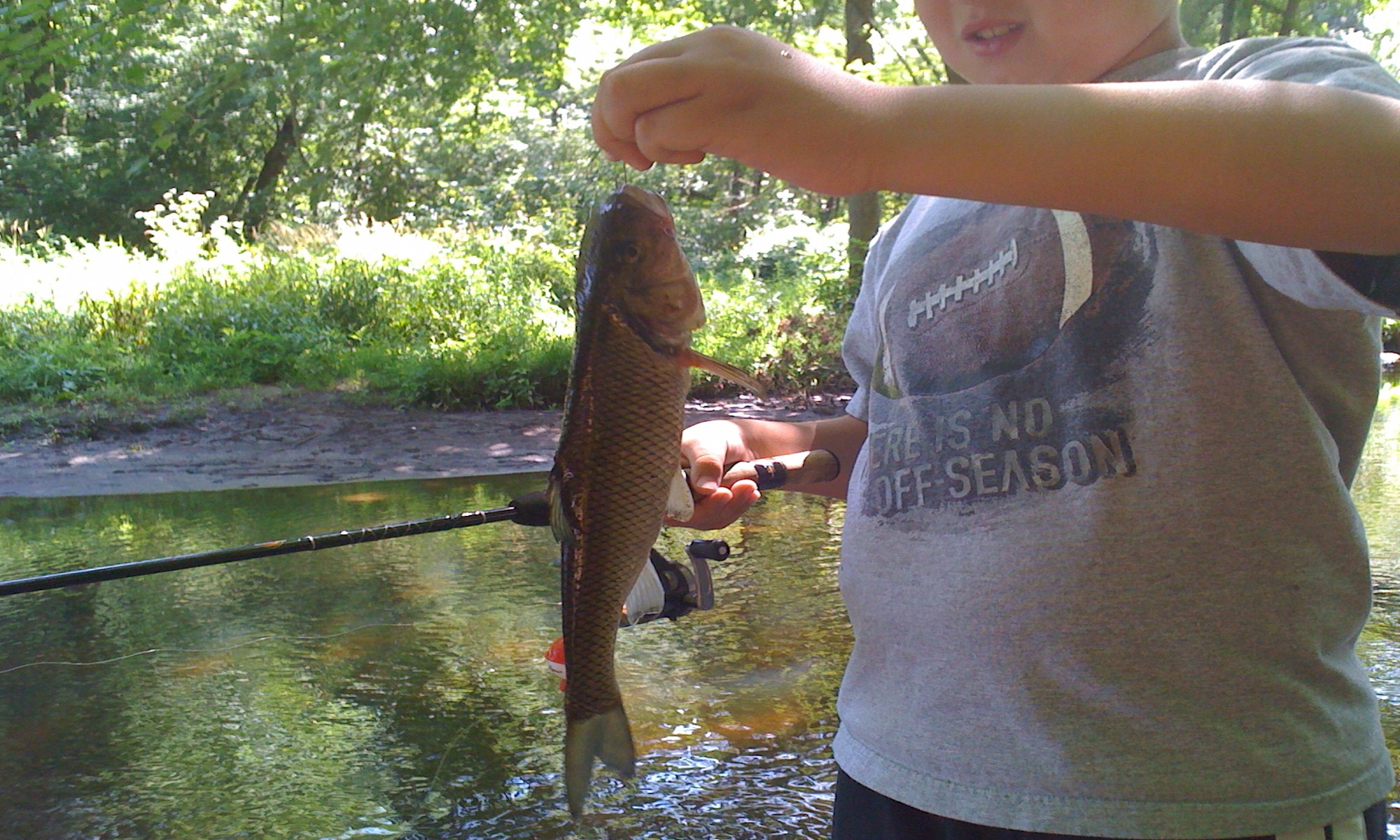I took some time off from work today and decided we’d take a break from the usual fishing routine.
Our local lake had some northern pickerel introduced into it a few years back and now it seems to be all that I catch in there. I’m of the opinion that the pickerel have taken over the lake and destroyed the bass population which used to be there. Any one else ever experience such a thing?
So when my older son said “let’s try the creek”, I said sure. The creek has yielded some very nice catfish, carp, pickerel and bass in the past. So we got some earthworms for the boys and off we went. Being a rubber wormer, I naturally used my rubber worm in the creek.
Well, my older son was the first to catch a fish and he caught a “roach” not long after we started fishing. My younger son caught some sunnies as usual and kept me busy re-worming and taking the fish off the hook. I decided it was time for my younger son (he’s 5) to learn how to put worms on his hook. After all, Dad needs to get in some fishing! After a few unsuccessful tries, he finally got a worm to stay on his hook!
I gave both my sons some bass fishing tips and we moved to another spot on the creek. My older son said there were no fish at that spot and wanted to move on, but Dad prevailed. Within 3 casts, I had a nice 14 inch largemouth bass in hand. After releasing the fish and helping my younger son unhook his sunny, he promptly caught his very first largemouth! Picture included here! I told my older son why the spot was a good spot and hopefully the lesson will stay with him for a lifetime!

We moved to a few more spots and my older son caught a nice largemouth as well as some sunnies.
A couple hours of fishing and we headed back home – a good day of fishing behind us!
Make sure YOUR fishing trips are successful – check out the 100 Best Freshwater Fishing Tips available on the upper right corner!
“Catch” you later.
